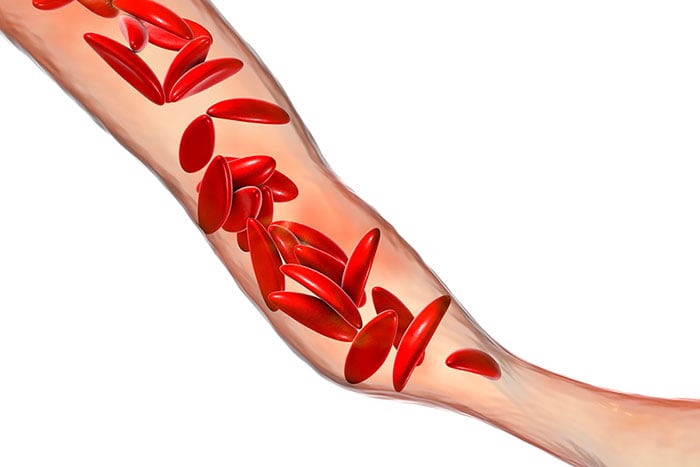Did You Know Sickle Cell Has Many Faces?
What is Sickle Cell Disease?

Sickle cell disease (SCD) is an inherited blood disorder that causes “sickle” shaped red blood cells that can stick together, blocking blood flow and oxygen from reaching all parts of the body. People with SCD can experience pain, anemia, infection, and other serious health problems (also known as complications) that may require care by a healthcare provider. When health problems, such as serious pain (also known as pain crises), cannot be managed at home or a visit to a healthcare provider is not possible, children and adults with SCD often require care in hospital emergency departments (ED) or clinics for treatment. In fact, the Sickle Cell Data Collection (SCDC) program (CDC’s current SCD monitoring project) found that, in California, people with SCD seek care in the ED an average of three times a year from their late teens to their late 50s.
Help Spread Awareness About the Many Faces of Sickle Cell Disease!
Did you know that sickle cell disease (SCD) affects millions of people throughout the world? Although SCD is most common among African Americans in the United States, it can also affect Hispanics and people whose ancestors come from countries in South Asia (such as India), southern Europe (such as Greece and Italy), and the Middle East (such as Saudi Arabia and Lebanon).
It’s important for healthcare providers, community workers, policy makers, and other SCD supporters to know that SCD affects diverse groups so that all people with SCD can be properly diagnosed and treated. CDC is sharing new resources to help spread awareness about the many faces of SCD.
View “Sickle Cell Has Many Faces” Videos
Watch people with SCD of diverse backgrounds share that SCD can affect anyone, no matter what you look like or where your family comes from:
- “Sickle Cell Has Many Faces.” (for a general audience)
- “A Message for Healthcare Providers: Sickle Cell Has Many Faces.”
Meet Mimi

Although Mimi’s medical history is similar to that of many individuals with SCD, her inherited blood disorder comes as a surprise to many healthcare providers when they first meet her because of one detail: she’s not African American.
Throughout her life, healthcare providers have doubted Mimi when she told them she had SCD. This has caused delays in Mimi getting the treatment she needs.
“I’ll have to wait for the blood work to come back for them to help me with anything. I’ll have to wait several hours in the emergency room for any sort of pain relief.”
Use New Resource Toolkit to Spread Awareness About the Many Faces of Sickle Cell Disease
The materials and resources included in the “Sickle Cell Has Many Faces” resource toolkit seek to dispel the commonly held belief that sickle cell disease (SCD) affects individuals of only African descent. Although SCD is most common among African Americans in the United States, it can also affect Hispanics and people whose ancestors come from countries in South Asia (such as India), southern Europe (such as Greece and Italy), and the Middle East (such as Saudi Arabia and Lebanon). The resource toolkit contains sample messages and materials you can use to help increase public and provider awareness about the many faces of SCD. It includes
- Promotional announcements that you can include in a newsletter, publication, email, or webpage;
- Social media posts you can send from your organization’s (or personal) handle; and
- Links to the “Sickle Cell Has Many Faces” videos, key resources, and materials for you to share with others.
To request a FREE copy of the toolkit, please email Mandip Kaur at wvx6@cdc.gov. For more updates on new resources, information, and events, follow us on Twitter at @CDC_NCBDDD.






















.png)











No hay comentarios:
Publicar un comentario